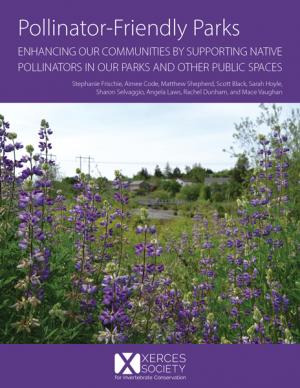
Plants and wildlife, including pollinators, can thrive in the seemingly inhospitable environment of towns and cities. Studies done from around the country have shown that dozens of species of bees can be found in gardens and parks in areas that are dominated by hardscapes such as Berkeley, California, and East Harlem in New York. In some cases, towns and cities are also important strongholds for rare species like the rusty patched bumble bee.
Pollinator-friendly parks are also human-friendly as they support physical and emotional benefits gained from time spent outdoors. They are excellent settings for guided group activities such as nature watching, whether that is for birds, butterflies, dragonflies, or bees. And they allow for quiet contemplation while sitting among flowers and the hum of insect life.
This publication, which replaces the edition from 2007, provides helpful information about how parks can provide the maximum benefit for pollinators and other insects. In addition to introductory chapters about the diversity and natural history of native bees, the handbook offers detailed information on how to:
- create flower-rich habitat,
- provide places for nesting and egg laying,
- reduce the use of pesticides in parks and greenspaces, and
- engage park patrons and community members in your conservation work.
Appendices provide regional lists of recommended pollinator-friendly plants and additional sources of information for further exploration of the topics covered in these guidelines.
Authors: Stephanie Frischie, Aimee Code, Matthew Shepherd, Scott Black, Sarah Hoyle, Sharon Selvaggio, Angela Laws, Rachel Dunham, and Mace Vaughan
